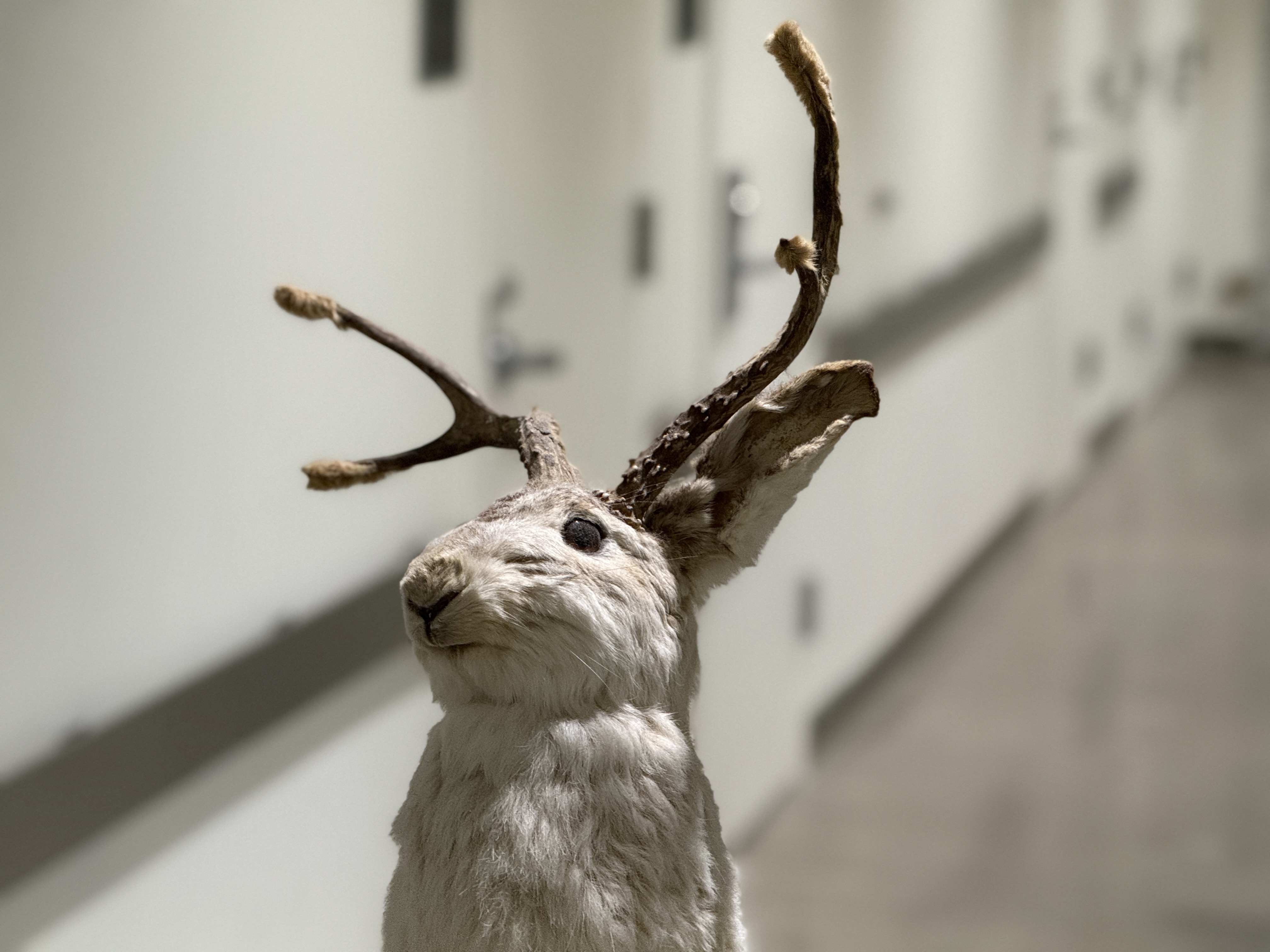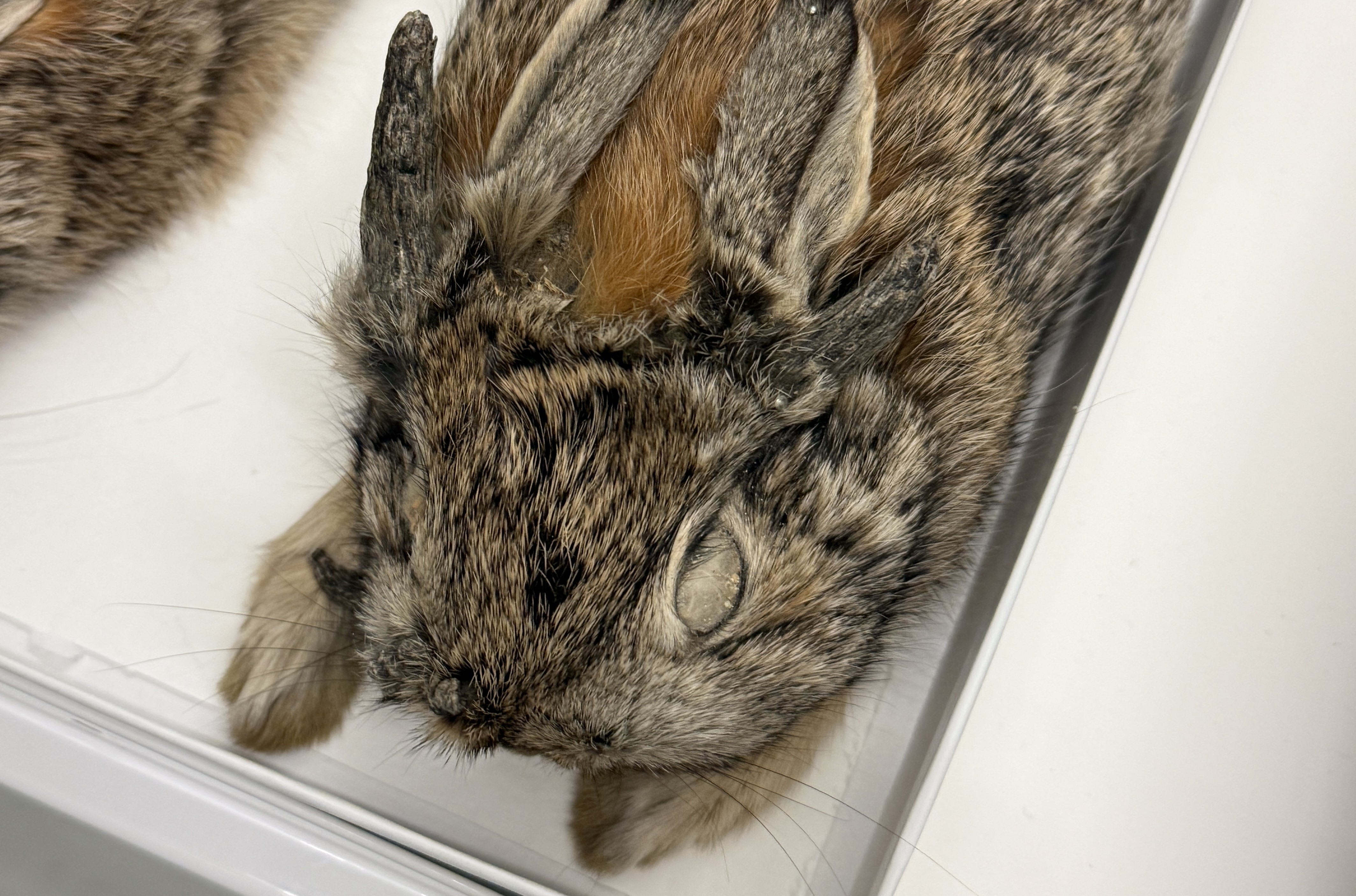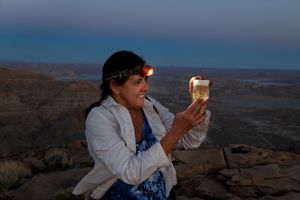CATALYST
DENVER MUSEUM OF NATURE & SCIENCE ONLINE MAGAZINE
What's Up with the Horned Bunny in the Museum's Zoology Collection?
The Virus-Infected Cottontail Rabbit Specimen That’s Equal Part Scary, Equal Part Legendary

A mythic taxidermy jackalope found within the Denver Museum of Nature & Science. (Photo/ Taran Volckhausen)
If you take a stroll through the Museum’s Mammal Research Collection, you’re bound to come across more than a few specimens that seem plucked straight from a cabinet of curiosities. One of the stranger sights? A so-called “horned bunny” that harkens to the legendary jackalope of the American West.
It’s not every day I get to ask our zoologists about horned bunnies, but after these curious creatures recently made national news when they were spotted around Fort Collins, I couldn’t resist finding out what our scientists knew about them.
Turns out, it was a good question to ask: the Museum has a specimen of a “horned” cottontail rabbit collected more than 100 years ago in Logan County. After seeing it firsthand, I can say this specimen is certainly a bit unsettling but it's also an undeniably fascinating look into one of nature’s many curiosities.

Cottontail rabbit infected with Shope Papilloma Virus. The specimen was collected by C. M. Lighthouse in Logan County, Colo. on Nov. 16, 1919. (Photo/ Taran Volckhausen)
Why do these bunnies look so bizarre? The answer lies in a real virus known as Shope papilloma virus, which causes keratinized growths, or essentially tumors, to form on a rabbit’s head and face. First identified in 1933, this virus eventually helped scientists explore the link between viruses and cancer — and its study helped lead to directly to the development of the human papilloma virus vaccine.
Assistant Collection Manager of Vertebrate Zoology Cameron Pittman explains that the Museum’s horned rabbit specimen offers a interesting view into how real-life biology can give rise to myths and legends.
Showing up in scientific research and legends for 100s of years, horned rabbits are thought to inspire the legend of the jackalope. The antlered rabbit was first conceived in Douglas Wyoming by two taxidermists who brought together their hunted bunnies and some leftover antlers to create this mischievous and slightly dangerous mythic creature. Horned bunnies have also appeared in other cultures, including German folklore, which tells of a horned, winged and fanged rabbit.
Unlike the mischievous jackalope, the horned bunnies showing up in Fort Collins likely won't be causing any problems for their neighbors. The disease isn't contagious for humans or other animals and most of the bunnies will eventually make a full recovery when the tumors fall off.
"While [the virus] might affect the bunny's overall physical fitness, they're actually harmless to you and your pets," said Pittman. "They're just cool features that are appearing in bunny populations around Colorado."





